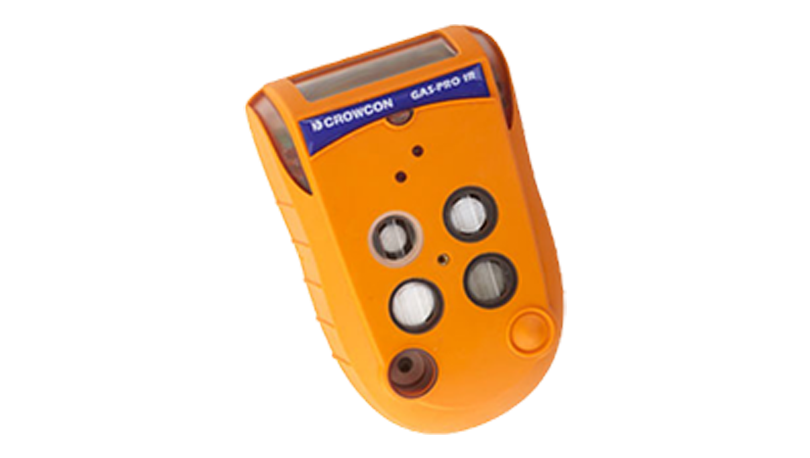
CO2
Kohlendioxid
Kohlendioxid ist farblos, geruchlos und dichter als Luft, so dass es sich in tief liegenden Gebieten ansammelt.
CO2 ist zwar überall um uns herum vorhanden, aber sein Gehalt ist in der Regel so gering, dass er unter normalen Bedingungen keine Gesundheitsrisiken birgt.
Kohlendioxidemissionen können jedoch gefährlich sein, insbesondere in engen, schlecht belüfteten Räumen, in denen auch eine sauerstoffarme Atmosphäre vorhanden sein kann. Die Messung vonCO2 in Teilen pro Million kann schwierig sein, daher wird in der Regel die Infrarotdetektion verwendet.
Farblos und geruchlos
Erstickungsgefahr in engen Räumen
5 Mal schwerer als Luft
Eine Exposition gegenüber 7%CO2 kann in nur 5 Minuten zum Tod führen
Wichtiges Treibhausgas
Mehr über KARBONDIOXID
| Gefährdung | Nicht brennbar, kann in hohen Konzentrationen zur Erstickung führen |
| Klassifizierung | Nicht als giftig eingestuft, gilt aber als Erstickungsmittel in geschlossenen Räumen |
| Expositionsgrenzen |
(OSHA) PEL\TWA: 5.000 ppm |
| Anwesende Industrien | Industrielle Prozesse (z. B. Lebensmittel und Getränke), Bauwesen, chemische Produktion, Feuerlöschsysteme, verbesserte Ölgewinnung |
| Auswirkungen auf die Gesundheit | Hohe Werte können zu Schwindel, Kurzatmigkeit, Kopfschmerzen und in extremen Fällen zu Bewusstlosigkeit oder Tod führen |
| Auswirkungen auf die Umwelt | Wichtiges Treibhausgas, das zur globalen Erwärmung und zum Klimawandel beiträgt |
| Dauer in der Luft | Kann jahrzehntelang bis jahrhundertelang in der Atmosphäre verbleiben und zu langfristigen Klimaauswirkungen beitragen |
Die Exposition gegenüber niedrigen Konzentrationen von Kohlendioxid kann zu Reizungen der Augen, der Nase oder des Rachens führen. Bei manchen Asthmatikern kann es auch zu Atembeschwerden führen. Bei Personen, die sehr hohen Konzentrationen von Kohlendioxid ausgesetzt waren, wurde Atemnot oder Atemstillstand beobachtet.
Niedrige Konzentrationen von Kohlendioxid können auch Kopfschmerzen, Gedächtnisstörungen, Müdigkeit und Gleichgewichtsstörungen verursachen. Kurze Expositionen gegenüber hohen Kohlendioxidkonzentrationen können zu Bewusstlosigkeit führen. In den meisten Fällen erlangt die Person das Bewusstsein ohne weitere Folgen wieder. Bei einigen Personen kann es jedoch zu dauerhaften oder langfristigen Auswirkungen kommen, wie z. B. Kopfschmerzen, Aufmerksamkeitsstörungen, Gedächtnisschwäche und motorische Störungen.
Personen, die dem Kohlendioxid ausgesetzt sind, sollten den betroffenen Bereich verlassen sofort verlassen und an die frische Luft gehen. Es wird empfohlen, beim Betreten von Bereichen mit hohem CO₂ Konzentrationen. Es gibt kein Gegengift für CO₂ Vergiftung, aber die Symptome können behandelt und gelindert werden. In schweren Fällen kann eine ärztliche Behandlung oder ein Krankenhausaufenthalt erforderlich.
Wie man Kohlendioxid nachweist
Brauchen Sie einen Expertenrat?
Das Team von Crowcon ist branchenweit führend auf dem Gebiet der Gasdetektion und verfügt über jahrzehntelange Erfahrung in der Arbeit mit und im Umgang mit Substanzen wie Kohlendioxid. Wenn Sie Beratung zum Thema Gasdetektion und Sicherheit wünschen, steht Ihnen ein Mitglied unseres Teams jederzeit zur Verfügung, um Sie über die besten Ressourcen und Ratschläge zu informieren, damit Sie, Ihr Standort und Ihre Mitarbeiter sicher sind.
Lesen Sie hier über Crowcon's Datenschutz- und Cookie-Richtlinie hier. Wenn Sie Ihre Meinung ändern, können Sie sich jederzeit abmelden












